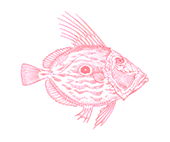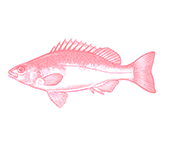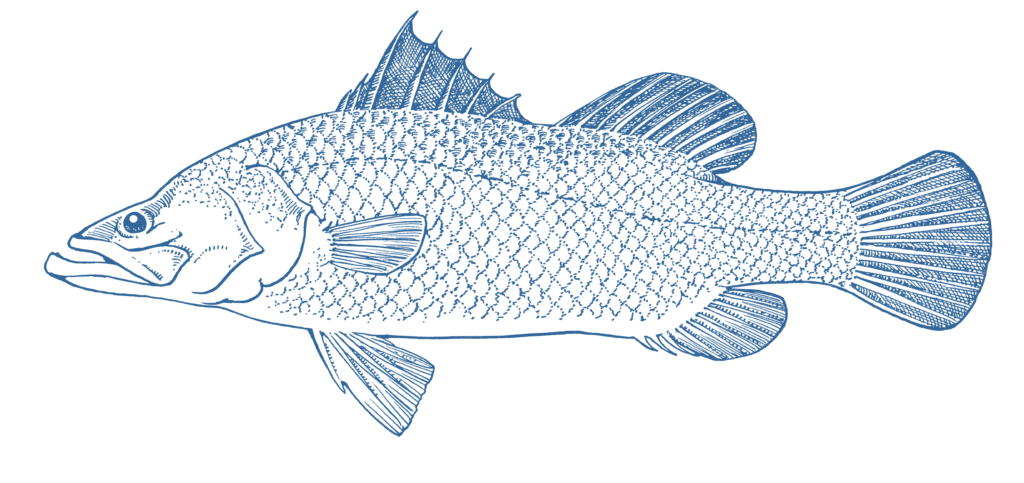




- Say No
Wild Caught
Region:
Commonwealth waters
- In Australia, pink ling is caught in bottom trawl and longline fisheries managed by the Commonwealth Government, mostly in depths from 200-900m.
- Two populations of pink are caught in Commonwealth-managed fisheries. The western stock is healthy, and the eastern stock is rebuilding such that there are no serious overfishing concerns.
- The fishery catches other threatened species such as Australian fur seals, shortfin mako sharks and seabirds, although industry has been proactive in trying to reduce mortalities of these vulnerable species.
- The fishery is likely impeding the recovery of endangered bycatch species that used to be mainstays of the fishery, such as school shark and eastern gemfish.
- The fishery operates around a major global ocean heating hotspot but does not explicitly account for climate change when setting future catch limits. Significant research is welcome in this area but is overdue.
- There has been significant research into the ecosystem impacts of the fishery, but marine park protections are seriously inadequate and if improved could significantly increase the resilience of target and bycatch species, and vulnerable seafloor habitats.
- The fishery is expected to undergo its second round of major reforms, and implement vital camera monitoring across the fleet in coming years. This has the potential to significantly improve the GoodFish ranking of this fishery in future.
- Commonwealth Southern and Eastern Scalefish and Shark Fishery (Commonwealth Trawl Sector and Scalefish Hook Sector) (818t in 2021/22)
Pink ling are a benthic predatory finfish found on the continental shelf and slope throughout southern Pacific and Atlantic ocean basins, and are most commonly caught at depths from 200-900m. Juveniles tend to occur in shallower waters than adults. Pink ling occur over a variety of substrates, from rock ground to soft sand and mud in which they burrow.
Pink ling are caught in the Commonwealth-managed Southern and Eastern Scalefish and Shark Fishery (SESSF), which is Australia’s largest source of locally caught finfish for the domestic market. Most (~70% of SESSF catch) catch comes from targeted bottom otter trawl fishing, but also in demersal longline fishing methods on the shelf edge and continental slope.
Although the species is managed as a single unit, recent research indicates there are two separate stocks of pink ling. While there are some concerns and uncertainties over the health of pink ling populations in the eastern part of the SESSF fishery, that population appears to be recovering and the slightly larger western population is in robust condition.
The fishery has made significant progress in reducing protected seabird bycatch, though fur seal bycatch is potentially increasing. Seal Excluder Devices (SEDs), which act as escape hatches for seals that enter trawl nets, are mandatory. All trawl boats must have a seabird management plan in place to guide how each boat aims to reduce interactions with seabirds while actively fishing. Many of the solutions to seabird interactions have been fishing industry-led innovations and are proving highly successful in reducing these impacts.
Most concerning is bycatch of species including eastern gemfish and school shark that used to be primary or secondary target species of the fishery, but have been so severely overfished by the SESSF that they are now on the Australian Threatened, Endangered or Protected Species lists.
No Australian fishery has pushed more of its former target and secondary species onto our endangered species lists, and there is no evidence of recovery for most of these species. Special rebuilding strategies that allow these species to be caught and sold while holding this protected status are largely failing to deliver sufficient if any actual rebuilding.
The SESSF operates around a global ocean heating hotspot, warming at almost four times the global average. While serious climate impacts have been attributed to declining SESSF fish stocks for around a decade, there is still no explicit consideration of climate impacts when setting future catch limits. Significant research is underway in this area, which is welcome but overdue.
There has been considerable investment in scientific research around the ecosystem and habitat impacts of the fishery, but this has not been supported by sufficient implementation of meaningful protections from fishing and climate-related impacts in the fishery, which have both been severe. Commonwealth waters marine parks are in place throughout the fishery but were designed primarily to avoid key fishing grounds, so confer little benefit. While marine parks should be a valuable and cost-effective tool for protecting vulnerable species and habitats; providing both resilience and a scientific resource to manage climate impacts; they (along with existing fishery area closures), protect almost none of the most heavily fished habitats in the fishery. Improving marine park protection will be critical to addressing and rebuilding the future sustainability of the SESSF fishery.
Independent monitoring of most fishing fleets of the SESSF that catch pink ling has been insufficient to ensure robust information is collected on protected species bycatch and fish discarding, which can occur when fish are caught in trawl nets that the fisher holds no quota for, so cannot land without financial penalty. This creates significant risk as it impedes managers in reliably calculating the total impact (of all fishery mortality from retained plus the fish caught but thrown back) on fish stocks from the fishery. The fishery is set to introduce video monitoring across the fleet in 2024 which is welcome and could substantially address this issue, but it is notable that improving this information collection was also a condition of a fishery reform process in 2006 that was not followed through.





